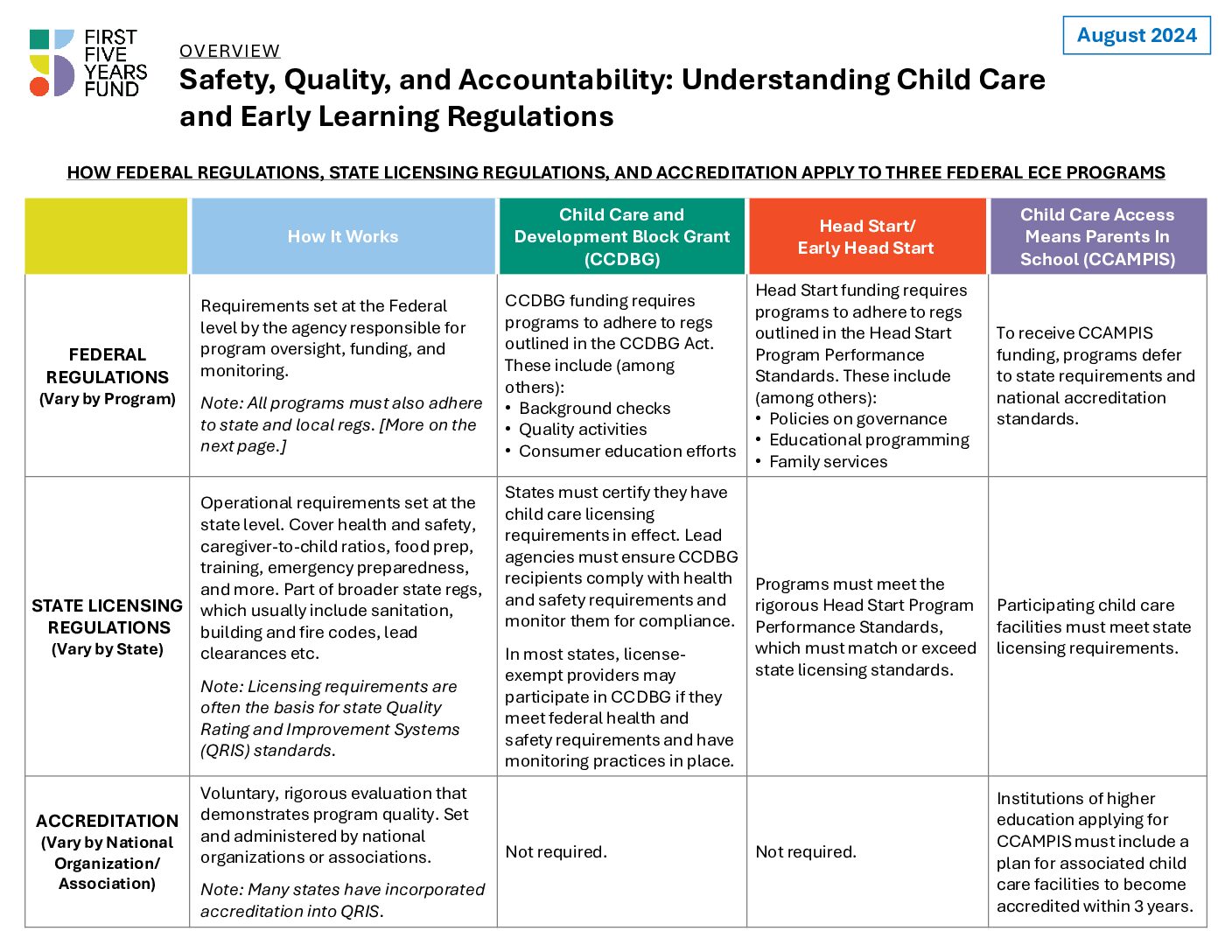Safety, Quality, and Accountability: Understanding Child Care and Early Learning Regulations

There are numerous policies in place to ensure the safety and quality of care for young children. Understanding the different levels of oversight that hold early care and education (ECE) programs accountable can be complicated.
There are regulations and accountability measures at the federal, state, and local level, as well as private regulatory bodies, like accreditation associations. All formal child care and early learning programs must be regulated. (There is no such requirement for informal care, such as that provided by a family member, friend, or neighbor.) Each regulatory body plays a unique role, yet there is often overlap between systems. And child care programs receiving multiple funding sources must adhere to all relevant sets of regulations.
The following resource explains what regulations federal ECE programs must abide by to ensure they meet important standards, and how the different sets of rules work together to support children and families. The table looks specifically at the different quality and accountability requirements for the Child Care and Development Block Grant (CCDBG), Head Start, and the Child Care Access Means Parents In School (CCAMPIS) program. The following pages explain the differences between the four primary types of oversight: program regulations (which can be at the federal, state, and local level), state licensure, program accreditation, and quality rating and improvement systems (QRIS).
Subscribe to FFYF First Look
Every morning, FFYF reports on the latest child care & early learning news from across the country. Subscribe and take 5 minutes to know what's happening in early childhood education.




